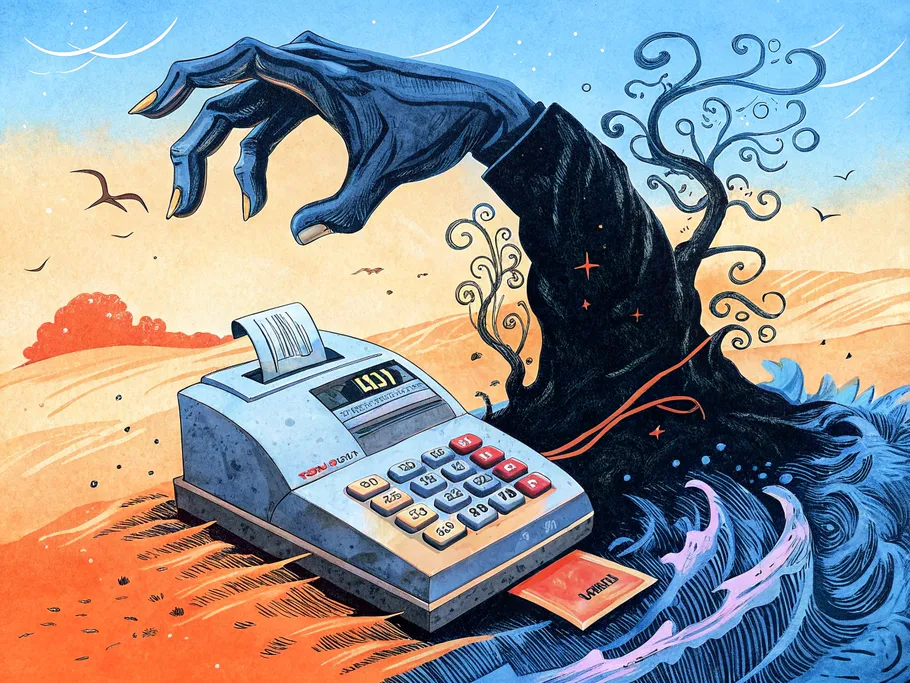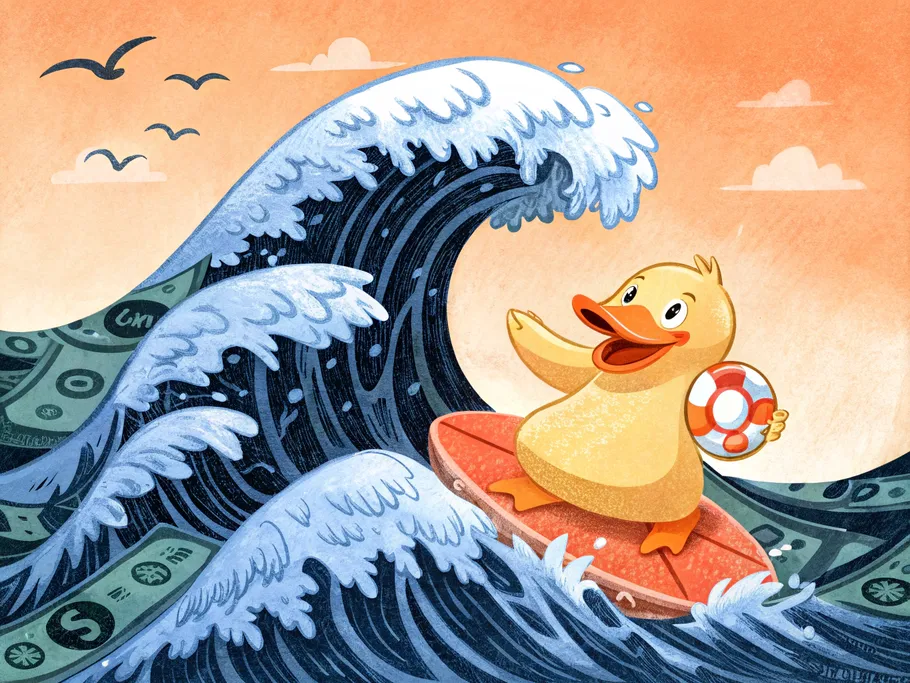How To Thrive When Times Get Tough
Picture this: A shiny new tech startup, full of hope, about to lock in that Series A funding. Then, boom—a macroeconomic downturn hits.

Investors pull back, the market cools, and suddenly, the future isn’t so rosy. It’s like getting hit by a rogue wave just as you were about to cross the finish line.
Unfortunately, this is a scenario many businesses face when the economy goes south.
But here’s the good news: With the right strategies and a little bit of grit, businesses can not only survive a downturn—they can emerge even stronger. This guide is all about how to ride out the storm and come out on top.
To survive a downturn, you’ve first got to understand the terrain. The macro environment is the big picture—the external, uncontrollable forces that shape your business’s world. Think of it like the weather system: you can’t control the rain, but you can sure adjust your umbrella.
Here’s what’s included in the macro environment:
All of these work together, forming the DESTEP model (also called DEPEST). It’s your roadmap for understanding how the broader world impacts your business.
Marketers need the macro environment like a chef needs a recipe. Here’s why:
Before jumping into a new market, businesses need to conduct a deep dive into the macro environment.
You wouldn’t build a house without checking the soil, right? Same logic here.
Use your macro environment knowledge to build a marketing strategy that works, even when the economy isn’t. Here’s how:
Downturns aren’t just bad luck—they’ve got a usual lineup of troublemakers:
Mix a few of these together, and you’ve got yourself a full-blown downturn.
Downturns don’t just rattle Wall Street—they send aftershocks straight to your bottom line. Here’s what comes your way:
But here’s the kicker: downturns, while challenging, are also opportunity-rich.
The businesses that thrive during these times – the ones that show serious economic resilience – are the ones that adapt quickly. They’re the ones that got their business continuity planning right.
You might not be able to control the storm, but you can certainly learn how to ride the waves.
Think back to the 2008 financial crisis. While most businesses were scrambling to stay afloat, a few savvy players found a way to ride the waves—and even thrive.

Netflix pulled off a legendary plot twist—ditching DVD rentals for streaming and never hitting rewind.
Airbnb crashed the recession party by offering budget-friendly stays just when travelers needed them most, turning a rough economy into their launchpad.
Costco played it smart, doubling down on quality products at rock-bottom prices, proving that even in a downturn, people love a good deal.
So yes, economic downturns may feel like a nasty storm, but the right strategies can help your business stay afloat, or better yet, come out the other side stronger than ever. You just need to navigate wisely.
Cutting costs is often the go-to survival strategy in tough times. But here’s the trick: It’s not just about spending less—it’s about spending smarter. Think of it like decluttering your closet: get rid of the things that don’t fit (like unused software subscriptions) but keep the essentials (like your customer database).
First, you’ve got fixed costs—things you pay no matter what, like rent or salaries. These are your hard-to-move expenses, and they need to be scrutinized. Can you renegotiate the lease? Trim down your office space?
Then, there are variable costs, like commissions or raw materials. These costs fluctuate based on your sales, and while it might seem tempting to cut them, doing so could actually harm your growth potential.
The key is to differentiate between what you have to pay and what you could cut, ensuring that your cuts don’t sabotage the very thing that will help you emerge victorious: sales.
In a downturn, it’s not just about acquiring new customers—it’s about holding onto the ones you have. Remember, loyalty is cheaper than acquisition. Now’s the time to double down on retention by offering personalized services, exclusive loyalty programs, and leveraging data analytics to better understand your customers’ evolving needs.
Think of Amazon—it doesn’t just sell books, it knows what you want before you even know you want it. Use your customer data to make their experience seamless, personalized, and oh-so-tempting.
Keep them loyal, and they’ll stick with you when times get tough.
In tough times, cash is king. But here’s the kicker: Not all cash is created equal. Today’s strategy is simple: “Last startup standing wins.” No one knows how long the storm will last, so it’s time to batten down the hatches and stretch your runway as long as possible.
How do you work on a business strategy during recession?
You become a “default alive” startup. This means getting everything in order within 30 days to ensure you can survive on your current funds. If investment opportunities pop up, even at a bad valuation, grab them.
The market’s uncertain, and you don’t want to be the one waiting to raise funds when the ship is already sinking. When it comes to funding, it’s about survival now and thriving later.
When the economy wobbles, leaning on one income stream is like playing Jenga with a missing base. Take a cue from Apple—if iPhone sales slumped, they had Macs, iPads, and iTunes keeping the cash flowing.
Diversify your offerings, explore fresh revenue streams, and give yourself a backup plan. Because when one market tanks, you don’t want to be the one left scrambling.
Sticking to your home turf is cozy—until it isn’t. Expanding to new markets, whether domestic or global, can be your safety net in shaky times. Spotify played this game right, growing internationally to avoid being at the mercy of one market’s ups and downs.
A smart pivot into a stable or emerging market can open up fresh revenue streams and protect you when the local economy decides to take a nap.
When things go south, a solid cash reserve is what keeps you afloat while others are bailing water. The more cushion you have, the longer you can keep running without making desperate cuts. Strong liquidity means you’re calling the shots—not the banks.
Traditional lenders playing hard to get? No problem. Alternative funding sources—peer-to-peer lending, online cosigner loans, or venture-backed financing—can be faster, more flexible, and less painful than groveling at a bank’s doorstep.
Getting through a downturn is one thing, but thriving? That takes guts. The biggest brands don’t just ride out recessions; they double down on strategy and take the kinds of risks that set them apart. Nike didn’t just survive 2008—they came out swinging with a powerhouse “Just Do It” campaign that cemented their dominance.
Get scrappy, get smart, and get moving—because when the storm clears, you want to be the one standing tall while everyone else is catching their breath.
In a downturn, survival isn’t enough. You want to thrive, right?
The real secret sauce is all about proactive strategies—innovating, building strategic partnerships, and harnessing technology to keep the engine running and, if possible, revving it up.

Ever heard of loss aversion? It’s that nifty little psychological quirk where people feel the sting of losing something much more acutely than the pleasure of gaining something. So, how can businesses use this to their advantage?
Simple—position your product or service as a shield against loss. No one likes to lose money, customers, or time, and by framing your offering as the safeguard that prevents these things, you tap into an anxiety-fueled, buy-now impulse.
It’s easier to sell a product that helps people avoid losing something than one that promises a gain. Highlight features that prevent loss—whether it’s cost savings, increased efficiency, or avoiding a competitor stealing your market share. The trick is not just meeting needs, but becoming indispensable.
If customers would feel the pain of losing you, you’ve cracked the code.
Remember those early days when the startup was just you and a handful of caffeine-fueled dreamers? It was chaos, but it worked. Now, in the face of a downturn, it’s time to channel your inner founder mode. This leadership style is all about being flexible, hands-on, and able to make rapid, decisive moves. Sure, your company might have grown since those scrappy days, but now’s the time to adapt fast and make bold moves to grab emerging opportunities before anyone else.
Flexibility is your best friend here. The bigger your business gets, the more complex it becomes, and founder mode helps you navigate this with the same agility that got you started. Stay true to your vision, but don’t be afraid to pivot when necessary.
The less risk you take, the smaller your reward. Calculated risks are your ticket to differentiating your business in a crowded, shrinking market. Look at Amazon in the 2008 recession—while many were hunkering down, Bezos was doubling down on the Kindle, setting the stage for eBook domination.
If there was ever a time to take big risks for big rewards, it’s now. Make the most out of the downturn by picking your battles wisely and going all in when you spot an opportunity.
Everyone talks about cutting costs in a downturn, but have you considered optimizing your supply chain?
When leaders are not able to manage supply chain issues gracefully, it can cause damage to the most respected brands. Think of Nike being in the news for paying Indian workers less than the legal minimum wage, or laying-off workers in Cambodia during the COVID-19 pandemic.
So get smarter with your logistics. Renegotiate supplier contracts, improve forecasting, and leverage data analytics to predict demand. Just like Zara perfected just-in-time inventory. Streamlining operations doesn’t just reduce costs—it positions your business for long-term success, even as the economy fluctuates.
This isn’t about slashing your way through—it’s about being more efficient, faster, nimbler, and reputed.
Tech isn’t just for startups—it’s your ticket to earning more or spending less. Slack made remote work seamless before we knew we needed it. Automation, cost-cutting, and market-ready solutions are all on the table if you embrace the right tech. Stay ahead, or get left behind.
Downturns aren’t a solo sport. Cross-industry collaborations unlock new markets, skills, and tech without the hefty price tag. Think Nike and Apple’s Nike+ app—different industries, same goal, bigger impact. The right partnership isn’t just helpful; it’s a growth accelerator.
Surviving is good. Thriving is better. Stay agile, keep learning, and build a business that bends but doesn’t break. In 2008, Airbnb didn’t just survive, it redefined travel.
Long-term success isn’t about simply riding out the storm—it’s about using it to your advantage.
The businesses that thrive are the ones that pivot when necessary, collaborate strategically, and lean into innovation instead of clinging to outdated playbooks.
Recessions don’t last forever, but the moves you make during one can define your trajectory for years. Position yourself wisely now, and you won’t just survive—you’ll emerge stronger, smarter, and ahead of the pack.

Email subscription is available ONLY TODAY (oh, okay, and tomorrow).
Surely, we respect your inbox! Unsubscription works every day.

 Just curious…
Just curious…We’d love to tailor your experience — which of these best describes you?